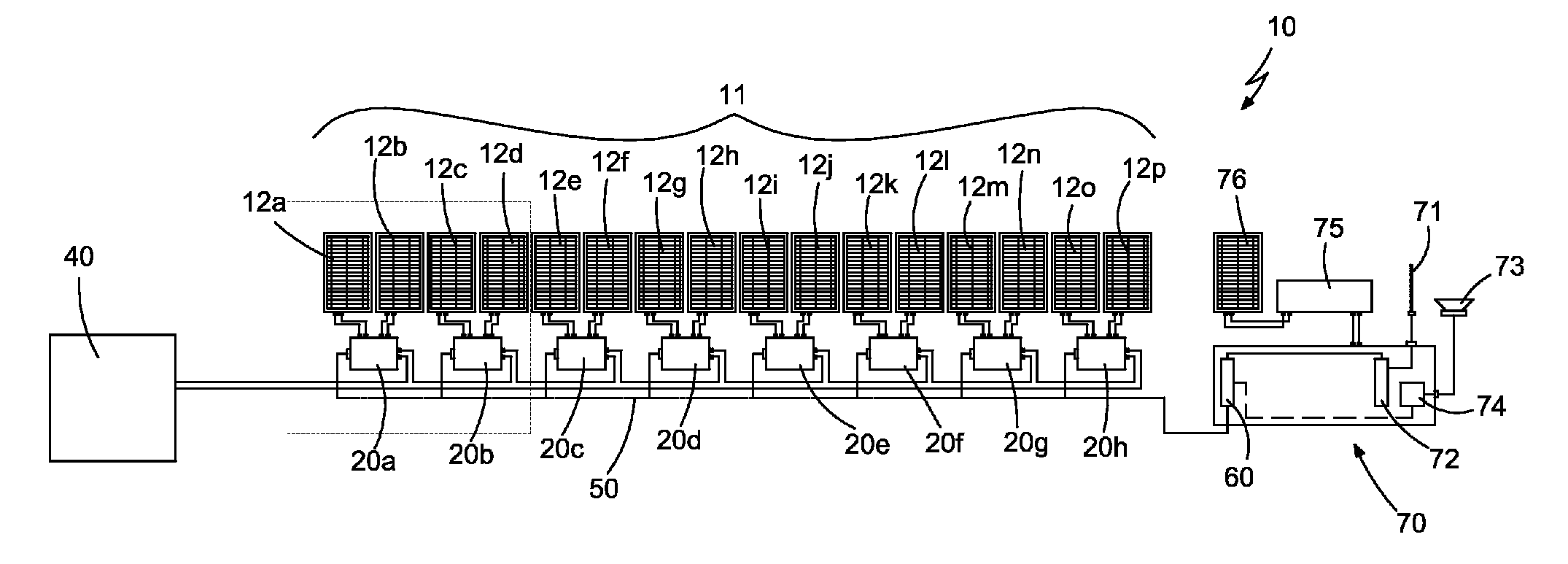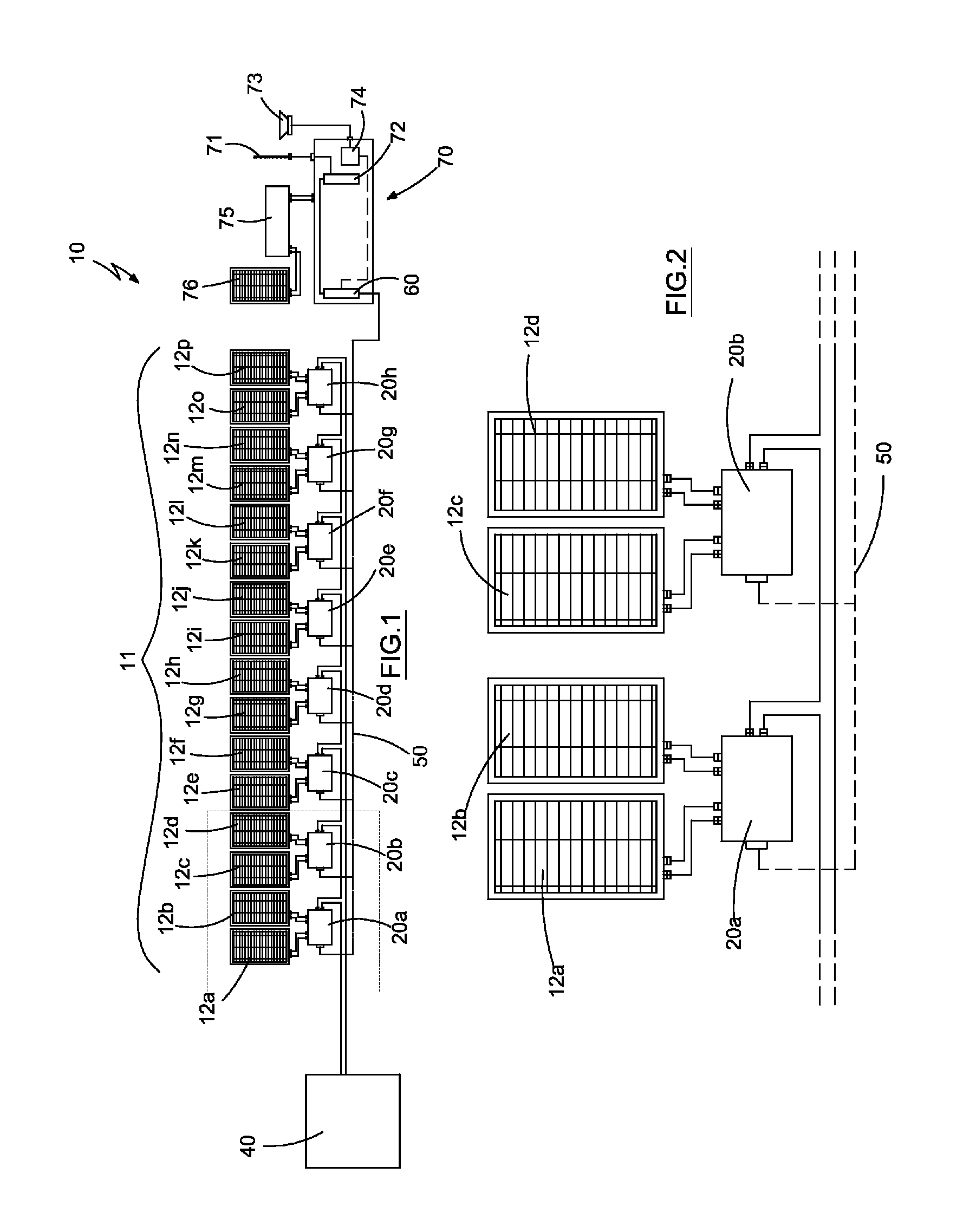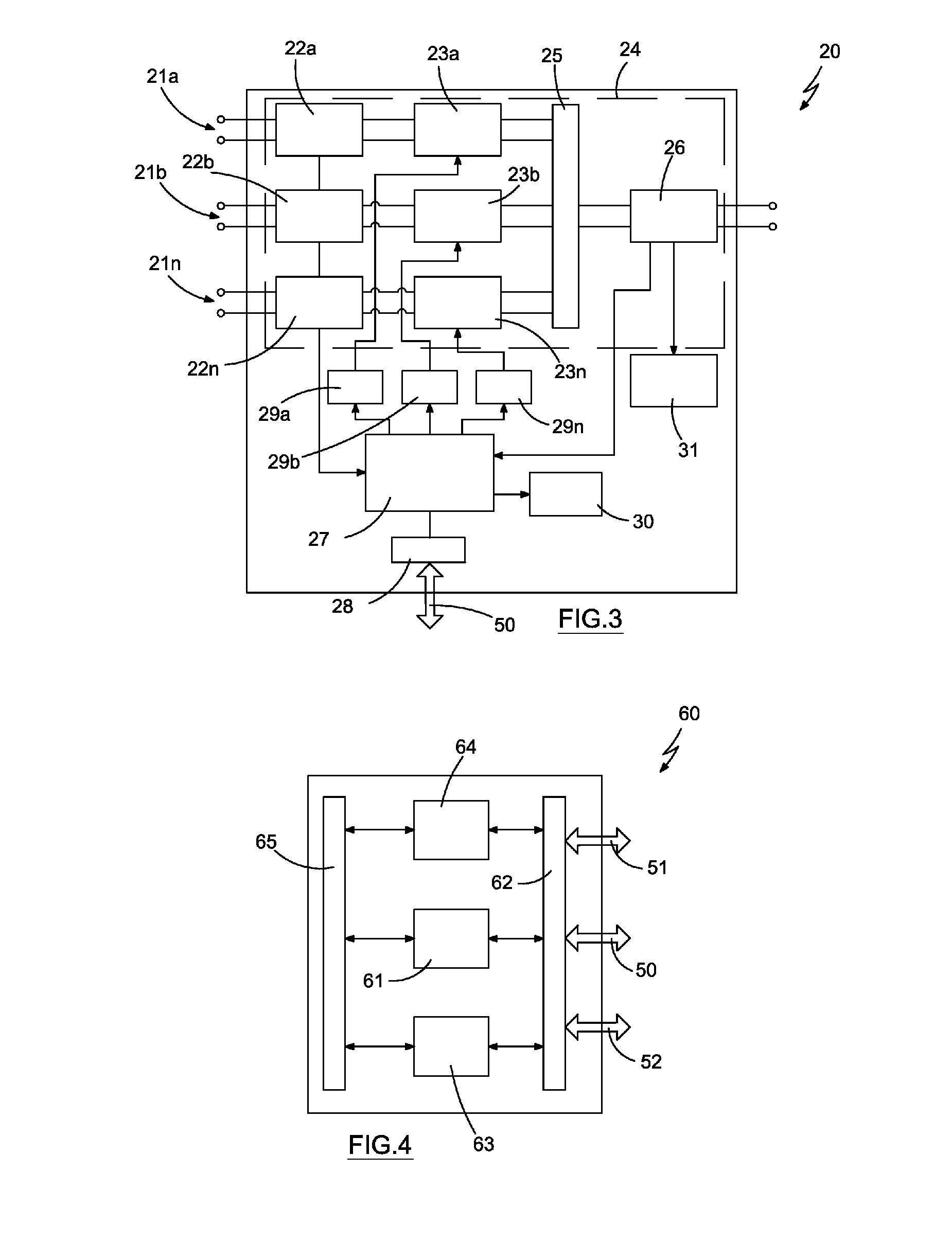Apparatus and method for managing and conditioning photovoltaic power harvesting systems
a photovoltaic power harvesting and photovoltaic technology, applied in the direction of photovoltaic energy generation, electrical apparatus, ac network circuit arrangement, etc., can solve the problems of complex electrical system, single module in trouble, and compromising an entire string, so as to maximize the power produced in the entire network, optimize the efficiency of the only dc power generator, and optimize the efficiency of the entire string/and
- Summary
- Abstract
- Description
- Claims
- Application Information
AI Technical Summary
Benefits of technology
Problems solved by technology
Method used
Image
Examples
Embodiment Construction
[0057]With reference to FIG. 1 it is pointed as a whole with 10 a PV power generation system comprising a single string, 11, of PV modules, 12a to 12p, each comprising an array of PV cells.
[0058]Each PV module is wired to an electronic unit, 20a to 20h, which are half the PV modules because two PV modules are connected to each electronic unit. The electronic units, 20a to 20h, are wired in series, just like PV modules in standard PV power generation systems, and connected to an inverter, 40, that could be a mains grid-tie inverter. Through communication means, 50, for instance a data transmission bus, each electronic unit communicates with a managing unit, 60, comprised in a managing center, 70.
[0059]The managing center 70 also comprises Wi-Fi transmission means, 71, and bridge means, 72, for transmitting data from the managing unit 60 to external devices, acoustic signalling means, 73, and relay means, 74, thereto for emitting alarm signals, and a battery and charge controller unit...
PUM
 Login to View More
Login to View More Abstract
Description
Claims
Application Information
 Login to View More
Login to View More - R&D
- Intellectual Property
- Life Sciences
- Materials
- Tech Scout
- Unparalleled Data Quality
- Higher Quality Content
- 60% Fewer Hallucinations
Browse by: Latest US Patents, China's latest patents, Technical Efficacy Thesaurus, Application Domain, Technology Topic, Popular Technical Reports.
© 2025 PatSnap. All rights reserved.Legal|Privacy policy|Modern Slavery Act Transparency Statement|Sitemap|About US| Contact US: help@patsnap.com



